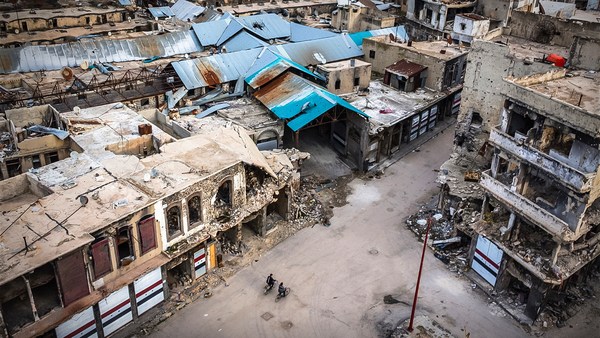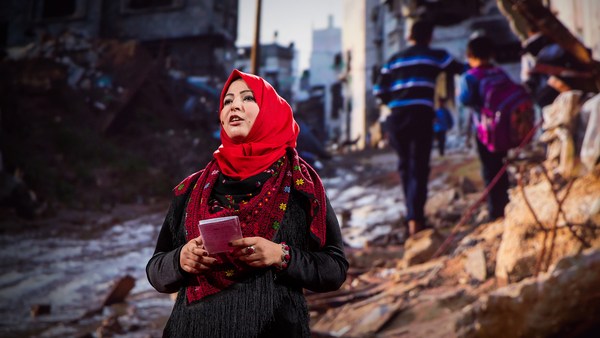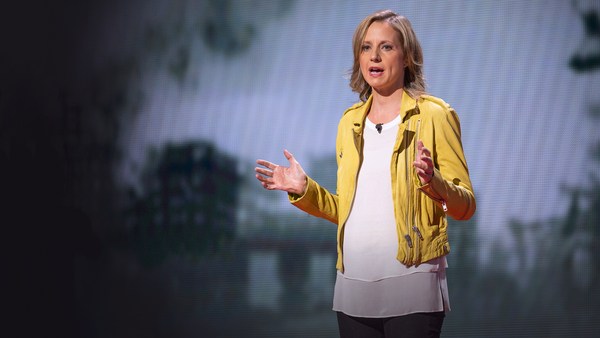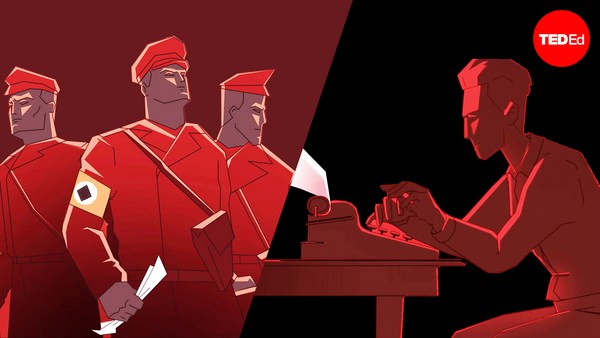I once had this nightmare: I'm standing in the middle of a deserted field full of land mines. In real life, I love to hike, but every time I want to go on a hike, it makes me nervous. I have this thought in the back of my mind that I might lose a limb.
This underlying fear started 10 years ago, after I met Mohammed, a cluster bomb survivor of the summer 2006 Israel-Hezbollah War in Lebanon. Mohammed, like so many other survivors all around the world, had to live through the horrifying repercussions of cluster munitions on a daily basis.
When the one-month conflict started in Lebanon, I was still working at Agence France-Presse in Paris. I remember how I was glued to the screens, anxiously following the news. I wanted to reassure myself that the falling bombs missed my parents' home. When I arrived in Beirut on assignment to cover that war, I was relieved to be united with my family, after they had finally managed to escape southern Lebanon. The day the war was over, I remember seeing this image -- one of blocked roads, of displaced people eagerly rushing south, back to their homes, regardless of what they would find.
An estimated four million cluster submunitions were spread in Lebanon during the 34-day conflict. Mohammed lost both legs during the last week of the conflict. The fact that he lives a five-minute drive from my parents' home made it easier to follow him through the years. It was now almost 10 years since we first met. I saw the young boy who had to endure physical and emotional trauma. I saw the teenager who tried to offer his friends tattoos, in return for a set fee of five dollars. And I know the young, jobless man who spends hours surfing the Internet trying to meet a girl who might become his girlfriend. His fate and the effects of losing his legs are now his daily reality.
Survivors of bomb trauma like Mohammed have to deal with so many details that never occur to us. Who would have imagined that so many daily tasks we do or take for granted, such as going to the beach or even picking up something from the floor, would become sources of stress and anxiety? Well, that's what eventually became of Mohammed, due to his inflexible prosthetic legs.
Ten years ago, I had no clue what a cluster bomb was, nor its horrifying implications. I learned that this indiscriminate weapon was used in so many parts of the world and continues to kill on a regular basis, without distinguishing between a military target or a child. I naively asked myself, "But seriously, who made those weapons? And what for?"
Let me explain to you what a cluster bomb is. It's a large canister filled with bomblets. When it's dropped from the air, it opens up in midair to release hundreds of bomblets. They scatter around wide areas and on impact, many fail to explode. Those unexploded ones end up just like landmines -- sitting on the ground, waiting for their next target. If someone steps on them by accident or picks them up, they can explode. These weapons are extremely unpredictable, which makes the threat even bigger. One day, a farmer can work his land without a problem. The next day, he can make fire and burn some branches, and the submunitions close by could be set off because of the heat. The problem is children mistake those bomblets for toys, because they can look like bouncy balls or soda cans.
Being a documentary photographer, I decided to go back to Lebanon a few months after the conflict ended to meet cluster bomb survivors. And I met a few -- Hussein and Rasha, who both lost a leg to submunitions. Their stories are similar to so many other kids' stories across the world and are a testimony to the horrifying implications of the continuous use of such weapons.
That's when I met Mohammed, in January 2007. He was 11 years old, and I met him exactly four months after his accident. When I first saw him, he was going through painful physiotherapy to recover from his fresh wounds. Still in shock at such a young age, Mohammed was struggling to get used to his new body. He would even wake up sometimes at night wanting to scratch his lost feet. What drew me closer to his story was my instant realization of the difficulties Mohammed was likely to face in the future -- that what he has been suffering while adjusting to his injury at the age of 11, would increase manyfold.
Even before his disability, Mohammed's life wasn't easy. He was born in the Rashidieh Camp for Palestinian refugees, and this is where he still lives. Lebanon holds some 400,000 Palestinian refugees, and they suffer from discriminatory laws. They're not allowed to work in the public sector or practice certain professions and are denied the right to own property. This is one of the reasons why Mohammed doesn't really regret dropping out of school right after his injury. He said, "What's the point of a university degree when I can't find a job to start with?"
Cluster bomb use creates a vicious circle of impact on communities, and not only the lives of their victims. Many who get injured by this weapon drop out of school, can't find jobs or even lose their jobs, therefore losing the ability to provide for their families. This is not to mention the continuous physical pain and the experience of feeling isolated. These weapons affect the poorest of the poor. The high medical cost is a burden to the families. They end up relying on humanitarian agencies, which is insufficient and unsustainable, especially when injuries require lifelong support to the injured. Ten years after Mohammed's injury, he is still unable to afford proper prosthetic legs. He's very cautious with his steps, as a couple of falls over the years brought him embarrassment among his friends. He joked that since he doesn't have legs, some days he tries to walk on his hands.
One of the worst yet invisible impacts of the weapon is the psychological scars it leaves. In one of Mohammed's early medical reports, he was diagnosed with signs of PTSD. He suffered from anxiety, poor appetite, sleep disturbance and showed signs of anger. The reality is Mohammed never received proper help to fully recover. His current obsession is to leave Lebanon at any cost -- even if it meant embarking on a hazardous journey along with refugees drifting towards Europe today through the Mediterranean. Knowing how risky such a journey would be, he said, "If I were to die on the way, it doesn't matter." To Mohammed, he is dead here, anyway.
Cluster bombs are a world problem, as this munition keeps destroying and hurting whole communities for generations to come. In an online interview with the director of the Mines Advisory Group, Jamie Franklin, he said, "The US forces dropped over two million tons of munitions over Laos. If they couldn't find their targets in Vietnam, there were free-drop areas in Laos where planes would drop their loads before going back to base, because it's dangerous to land with loaded planes." According to the International Committee of the Red Cross, in Laos alone -- one of the poorest countries in the world -- nine to 27 million unexploded submunitions remain. Some 11,000 people have been killed or injured since 1973. This lethal weapon has been used by over 20 states during armed conflicts in over 35 countries, such as Ukraine, Iraq and Sudan.
So far, 119 states have joined an international treaty banning cluster bombs, which is officially called the Convention on Cluster Munitions. But some of the biggest producers of cluster munitions -- namely, the United States, Russia and China -- remain outside of this lifesaving treaty and continue to produce them, reserve the right to produce them in the future, keep those harmful weapons in their stockpiles and even possibly use them in the future.
Cluster bombs have reportedly been used most recently in the ongoing conflicts in Yemen and Syria. According to research on the worldwide investments in cluster munitions producers by Pax, a Dutch-based NGO, financial institutions invested billions of US dollars into companies that make cluster munitions. The majority of these institutions are based in countries that have not yet signed the Convention on Cluster Munitions.
Getting back to Mohammed, one of the few jobs he was able to find was picking lemons. When I ask him if it's safe to work in the field he said, "I'm not sure." Research shows that cluster munitions often contaminate areas where agriculture is the main source of income. According to Handicap International's research, 98 percent of those killed or injured by cluster munitions are civilians. Eighty-four percent of casualties are males. In countries where these people have no choice but to work in those fields, they simply do it and risk it.
Mohammed is the only male to three sisters. Culturally, he's expected to provide for his family, but he simply can't. He tried to have so many different jobs, but he couldn't keep any due to his physical disability and the less-than-friendly environment to people with disabilities, to say the least. It hurts him a lot when he goes out looking for a job, and he's turned away with a small amount of money paid to him out of pity. He said, "I'm not here to beg for money, I just want to earn it."
Mohammed today is 21 years old. He's illiterate, and he communicates with voice messages. Here is one of his messages.
(Audio) Mohammed: (Speaking in Arabic)
Laura Boushnak: He said, "My dream is to run, and I'm pretty sure once I start running, I would never stop."
Thank you.
(Applause)





